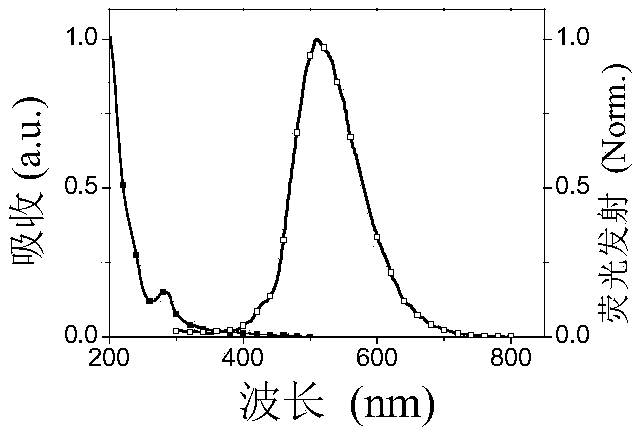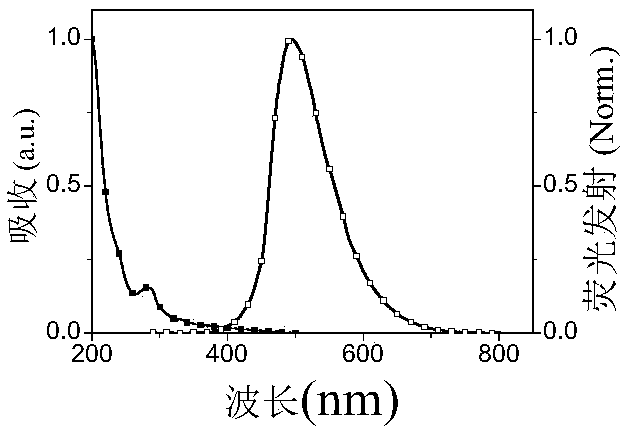A functional bisphosphine copper cluster electroluminescence material based on dibenzofuran group and its preparation method and application
A dibenzofuran-based, functional technology, applied in luminescent materials, copper organic compounds, compounds of Group 5/15 elements of the periodic table, etc., can solve the problem of weak carrier transport ability, molecular luminescence quenching, luminescence Poor stability and other issues, to achieve the effects of adjustable fluorescence emission, strong carrier transport, and good luminescence stability
- Summary
- Abstract
- Description
- Claims
- Application Information
AI Technical Summary
Problems solved by technology
Method used
Image
Examples
specific Embodiment approach 1
[0095] Embodiment 1: This embodiment is a method for preparing a functional bisphosphine copper cluster electroluminescent material based on a dibenzofuran group, which is specifically completed according to the following steps:
[0096] Mix the functional bisphosphine ligand, cuprous halide and dichloromethane, then react at a temperature of 40°C to 45°C for 10h to 15h, and then use a rotary evaporator to spin dry to obtain a solid substance; use dichloromethane and petroleum The ether mixture is used as eluent for column chromatography purification to obtain a functional bisphosphine copper cluster electroluminescent material based on a dibenzofuran group;
[0097] The molar ratio of the functional bisphosphine ligand to the cuprous halide is (0.5-3):1;
[0098] The volume ratio of the amount of the functional bisphosphine ligand to dichloromethane is 1mmol:(3mL~10mL);
[0099] The functional bisphosphine ligand is Wherein, said Z is H, The PPh 2 The structure is O...
specific Embodiment approach 2
[0100] Embodiment 2: The difference between this embodiment and Embodiment 1 is that the volume ratio of methylene chloride and petroleum ether in the mixture of dichloromethane and petroleum ether is 1:20. Others are the same as the first embodiment.
specific Embodiment approach 3
[0101] Embodiment 3: The difference between this embodiment and Embodiment 1 or 2 is that the molar ratio of the functional bisphosphine ligand to cuprous halide is (1-3):1. Others are the same as those in Embodiment 1 or 2.
PUM
| Property | Measurement | Unit |
|---|---|---|
| current efficiency | aaaaa | aaaaa |
| thickness | aaaaa | aaaaa |
| thickness | aaaaa | aaaaa |
Abstract
Description
Claims
Application Information
 Login to View More
Login to View More - R&D
- Intellectual Property
- Life Sciences
- Materials
- Tech Scout
- Unparalleled Data Quality
- Higher Quality Content
- 60% Fewer Hallucinations
Browse by: Latest US Patents, China's latest patents, Technical Efficacy Thesaurus, Application Domain, Technology Topic, Popular Technical Reports.
© 2025 PatSnap. All rights reserved.Legal|Privacy policy|Modern Slavery Act Transparency Statement|Sitemap|About US| Contact US: help@patsnap.com



